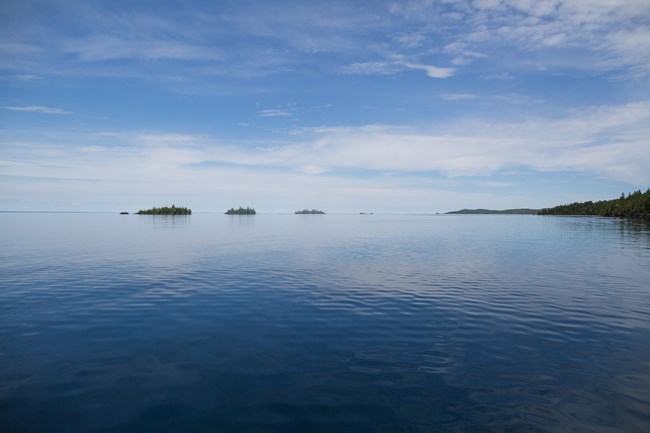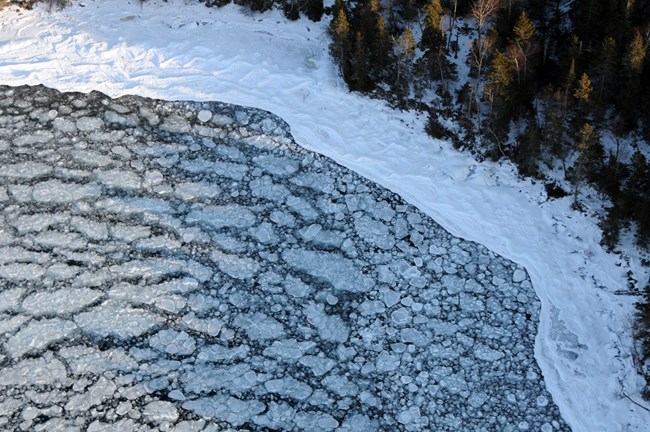Last updated: August 14, 2023
Article
Climate Change at Isle Royale: Lake Superior
Lake Superior’s cold, deep waters isolate and protect Isle Royale from outside influences. Despite the island’s geographic separation, evidence has shown that it is not unaffected by the outside world. While Lake Superior protects Isle Royale, it also influences the island in virtually every way. As Lake Superior changes with the climate, Isle Royale’s ecosystems, and historical and cultural resources are put at risk.

Amie Heeter
Water Temperature
Lake Superior has an average temperature of 40 degrees Fahrenheit. Cool water chills the air, keeping Isle Royale’s climate colder than surrounding mainlands. Cooler, denser water settles to the bottom of the lake, and a layer of warmer water floats on top. The interaction of these layers influences water temperature.
As the climate warms and air temperatures increase, Lake Superior’s surface water warms, creating higher evaporation rates and altering stratification, which determines water nutrient levels and availability of food sources at different depths, influencing change in the ecosystem.
Water Levels
As water levels rise, Isle Royale’s shoreline species, such as aquatic birds and spawning fish, are at risk of losing their habitat. Changing water levels could submerge shoreline bird nesting areas, alter the depth and viability of fish spawning ranges, and hinder tributary accessibility for fish.
Many of Isle Royale’s cultural resources, such as Edisen Fishery, also exist along shorelines. High lake levels alter how waves interact with the shore, creating more erosion and inciting damage to these structures.

Paul Brown
Ice Coverage
Increasing water temperatures within Lake Superior’s stratification maintains warmer surface water during winter, and less stable ice coverage is formed. Less ice coverage reduces the likelihood of ice bridges between Isle Royale and the mainland, impacting species like wolves. Unstable ice floats can also damage underwater resources such as historic shipwrecks, degrade structures like docks, and intensify shoreline erosion.
Island Climate
Warmer surface water on Lake Superior creates increased air temperatures on Isle Royale. Warmer landmass temperatures impact Isle Royale ecosystems at every level, but species like wolves, moose, loons, balsam fir, cisco and disjunct plants are put at a significant disadvantage. Potentially problematic species such as winter ticks and invasive zebra mussels benefit from climate change.
Warmer air temperatures also create higher likelihood of severe weather. Storms produce greater precipitation, wave impact, and wind speeds. High impact storms can be problematic for Isle Royale’s facilities and cultural resources, such as historic shipwrecks, resorts, and fisheries.
Sensitive Ecosystems
Increasing water temperatures may create uninhabitable conditions for climate-sensitive species, such as cisco, who thrive in cooler water. Adversely, warmer water temperatures make Lake Superior habitable for invasive species, such as zebra mussels.
